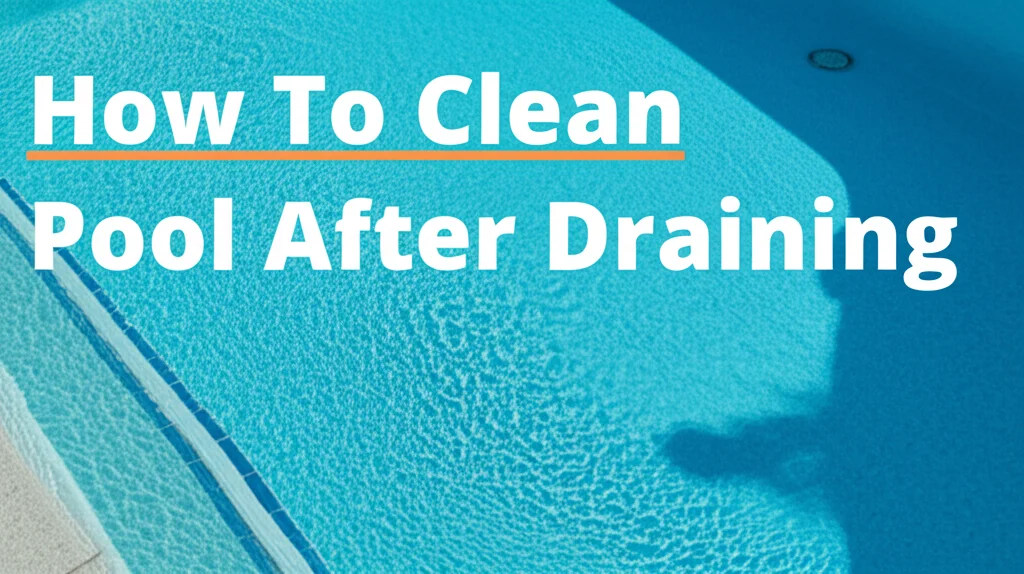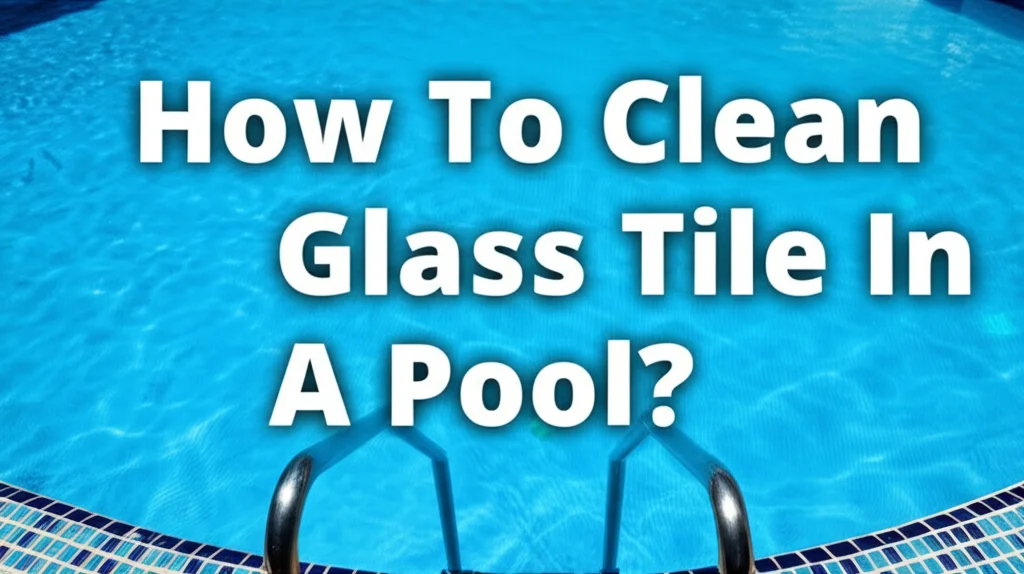· Pool Maintenance · 6 min read
How To Clean Pool After Draining

How To Clean Your Pool After Draining: A Step-by-Step Guide
Draining a pool isn’t something you do often, but when you do, it’s crucial to clean it properly before refilling. A drained pool presents a perfect opportunity to address issues you normally wouldn’t be able to see, like stains, cracks, and algae buildup. This guide will walk you through each step of cleaning your pool after draining, ensuring a fresh and inviting swimming experience. We’ll cover everything from initial debris removal to surface scrubbing and preparing for refilling.
Takeaway:
- Remove all large debris.
- Scrub the pool surfaces thoroughly.
- Inspect for cracks and damage.
- Acid wash if necessary.
- Vacuum and backwash before refilling.
Quick Answer:
Cleaning a pool after draining involves removing debris, scrubbing surfaces, inspecting for damage, acid washing (if needed), and vacuuming before refilling. This process ensures a clean, safe, and enjoyable swimming environment.
1. Safety First: Before You Begin
Before you even think about cleaning, safety is paramount. Drained pools can be unstable, and the surfaces can be slippery. Always wear appropriate footwear, like rubber-soled shoes, to prevent falls. It’s also a good idea to have a helper, especially if you’re working in a deep end. Ensure the pool area is well-ventilated, particularly if you plan on using any cleaning chemicals. Finally, never enter a drained pool alone.
2. Removing Large Debris: The Initial Sweep
Once you’ve ensured your safety, start by removing any large debris that’s settled at the bottom of the pool. Leaves, twigs, rocks, and toys are common culprits. A leaf rake or a sturdy push broom works well for this initial sweep. Focus on getting everything into a pile, making it easier to scoop up. Don’t underestimate the amount of debris that accumulates, even with regular maintenance.
- Use a leaf rake for lighter debris.
- A push broom is effective for heavier items.
- Dispose of debris properly in trash bags or containers.
- Consider using a shop vac for smaller, hard-to-reach pieces.
3. Scrubbing the Pool Surfaces: A Deep Clean
With the large debris removed, it’s time for a thorough scrubbing. This is where you tackle algae, waterline stains, and general grime. A pool brush with stiff bristles is essential. Different surfaces require different approaches. Concrete or plaster pools benefit from vigorous scrubbing, while vinyl liner pools need a gentler touch to avoid damage.
Understanding Surface Types
- Concrete/Plaster: Use a steel-bristled brush and a pool cleaning solution designed for these surfaces.
- Vinyl Liner: Opt for a nylon-bristled brush to prevent tearing or punctures.
- Fiberglass: A soft-bristled brush is best to avoid scratching the gel coat.
Don’t forget to scrub the walls, floor, steps, and any other features within the pool. Pay special attention to areas prone to algae growth, like corners and shaded spots. You can find effective pool cleaning solutions at most pool supply stores. https://www.beacleaner.com/how-to-clean-bathroom-floor-without-mop/ offers some great tips on cleaning hard surfaces, which can be applied to your pool.
4. Inspecting for Damage: Cracks and Repairs
A drained pool provides an excellent opportunity to inspect for cracks, leaks, or other structural damage. Carefully examine the entire pool surface, looking for any signs of deterioration. Small cracks can often be repaired with epoxy patching compounds. Larger cracks or structural issues may require professional attention. Addressing these problems now, before refilling, can save you significant time and money in the long run.
- Look for cracks in the plaster, concrete, or fiberglass.
- Check for loose tiles or coping stones.
- Inspect the skimmer and return fittings for damage.
- Consult a pool professional for significant structural issues.
5. Acid Washing (Optional): For Stubborn Stains
If your pool has stubborn stains that scrubbing alone won’t remove, consider acid washing. This process uses a diluted hydrochloric acid solution to etch away the top layer of the pool surface, removing stains and restoring brightness. However, acid washing is a harsh process and should only be done by experienced individuals or professionals. It can damage certain pool surfaces, like vinyl liners, and requires strict safety precautions.
- Acid washing is best for concrete or plaster pools.
- Always wear protective gear, including gloves, goggles, and a respirator.
- Follow the manufacturer’s instructions carefully.
- Neutralize the acid thoroughly after washing.
If you’re unsure about acid washing, it’s best to consult a pool professional. They can assess your pool’s surface and recommend the best course of action.
6. Vacuuming and Backwashing: Final Cleanup
After scrubbing and any necessary repairs, it’s time for a final vacuum. Use a pool vacuum to remove any remaining dirt, debris, and residue. If you have a sand filter, backwash it thoroughly after vacuuming to remove any accumulated particles. This ensures that your filter is clean and ready to handle the water when you refill the pool.
- Vacuum slowly and methodically to ensure complete coverage.
- Backwash your sand filter for at least 5-10 minutes.
- If you have a cartridge filter, clean or replace the cartridge.
- Ensure all debris is removed before refilling.
7. Preparing for Refilling: Final Checks
Before you start refilling your pool, take one last look around. Double-check that all drains are closed and that any repaired areas have had sufficient time to cure. Ensure your filter and pump are properly connected and ready to operate. Refilling a pool is a significant undertaking, so it’s best to be prepared. https://www.beacleaner.com/how-to-clean-vinyl-plank-flooring/ provides a good example of thorough preparation before a cleaning task.
FAQ: Common Questions About Cleaning a Drained Pool
Q: How long does it take to clean a pool after draining?
A: The time varies depending on the pool’s size, condition, and the amount of debris. Generally, it takes 1-3 days for a thorough cleaning, including scrubbing, inspection, and vacuuming.
Q: Can I use bleach to clean my pool?
A: While bleach can kill algae, it’s not recommended for general pool cleaning. It can damage pool surfaces and disrupt the water chemistry. Use pool-specific cleaning solutions instead.
Q: What if I find a large crack in my pool?
A: A large crack requires professional attention. Contact a pool repair specialist to assess the damage and recommend the appropriate repairs. Ignoring it could lead to further structural problems.
Q: Is acid washing safe for all pool types?
A: No, acid washing is not safe for all pool types. It’s generally only suitable for concrete or plaster pools and should be avoided on vinyl liners or fiberglass surfaces.
Conclusion: Enjoy Your Sparkling Clean Pool
Cleaning your pool after draining is a worthwhile investment of time and effort. By following these steps, you can ensure a clean, safe, and inviting swimming environment for years to come. Remember to prioritize safety, be thorough in your cleaning, and address any damage promptly. Now that you know how to clean pool after draining, you can confidently tackle this task and enjoy a beautifully refreshed pool. Don’t hesitate to consult a pool professional if you encounter any challenges or are unsure about any aspect of the cleaning process.




